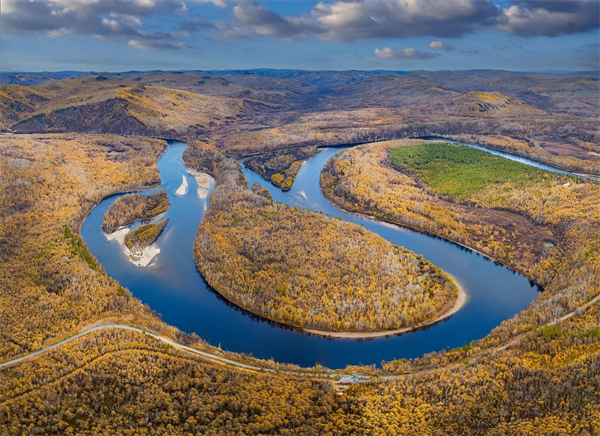China's largest State-owned forest expands green coverage

Lush forests in Inner Mongolia's Greater Hinggan Mountains area. [Photo/IC]
After 10 years of commercial logging bans, the Inner Mongolia Greater Hinggan Mountains' key State-owned forest area has continued to grow, with forest stock increasing by 226 million cubic meters, a 28.1 percent rise.
On April 1, 2015, China implemented a full ban on commercial logging in key State-owned forest areas, including the Greater Hinggan Mountains. The region has strengthened its ecological shield by halting logging and adopting protective, nurturing, and afforestation measures.
The Greater Hinggan Mountains forest area in Inner Mongolia is China's largest contiguous State-owned forest zone, covering 106,700 square kilometers. Often referred to as the "lungs of the Earth" alongside the Amazon rainforest, it plays a crucial role in maintaining ecological balance between the Heilong and Nenjiang river systems, the Songnen Plain, and the Hulunbuir Grassland. It also contributes to the preservation of the Arctic ecological zone.
From 1952, when the forest was first developed, to the complete halt of commercial logging in 2015, over 200 million cubic meters of timber and by-products were produced. Since the ban, the region has nurtured 44.22 million mu (2.95 million hectares) of forest, afforested 244,300 mu, converted 213,700 mu of farmland back into forests, restored 1.94 million mu of degraded forest, and rehabilitated 478,300 mu of vegetation.
"We are committed to protecting and restoring the Greater Hinggan Mountains ecosystem while exploring ways to transform ecological advantages into economic benefits," said Zhang Hong, deputy director of Inner Mongolia Forestry Industry Group's forest-derived economy development department. In 2024, revenue from forest-derived products reached 69.22 million yuan ($9.57 million), a 19.7 percent year-on-year growth.
The region has also pioneered carbon credit sales, generating over 60 million yuan in revenue.
"The forest is greener and more beautiful, attracting more visitors," said Sun Xiaohan, deputy director of Inner Mongolia Forestry Industry Group's tourism development department. Tourism routes, facilities, and services have been upgraded through collaboration with leading cultural and tourism enterprises, leading to a 62 percent increase in tourism revenue last year.



 Print
Print Mail
Mail


